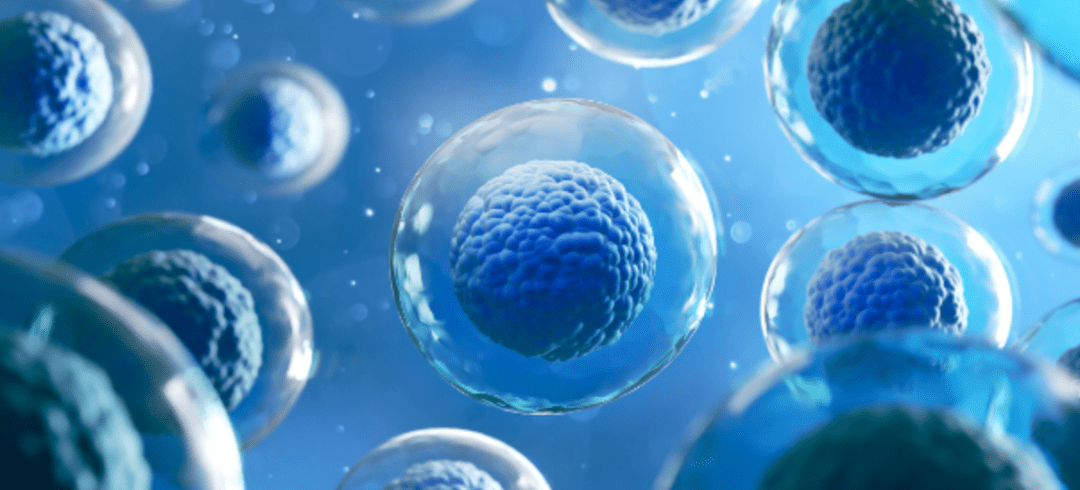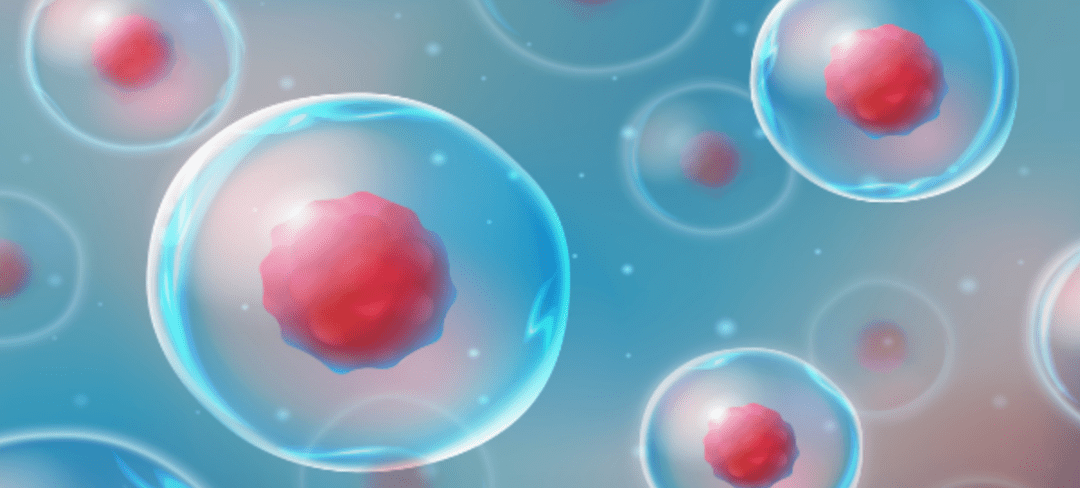
by Stemedix | Jul 25, 2022 | Stem Cell Therapy
Fibromyalgia is often misunderstood and misdiagnosed. It’s estimated that up to 2% of adults in the United States suffer from the condition, with women affected almost twice as frequently as men. Here we will learn about Stem Cell Therapy for Fibromyalgia.
What Is Fibromyalgia?
Fibromyalgia is a medical condition where sufferers experience widespread pain throughout their bodies. In addition, they can also endure sleep disturbances, fatigue, and emotional and mental distress.
Patients with fibromyalgia may also be more sensitive to pain, a condition called abnormal pain perception processing. While the origin of fibromyalgia is unknown, experts believe a malfunctioning nervous system may be the cause.
What Is Stem Cell Therapy?
Stem cell therapy is a form of regenerative medicine aimed at managing the root cause of pain and disease. Stem cells lie dormant throughout the body until they’re activated as part of a healing response.
Mesenchymal stem cells are different from other cells found in the body, as stem cells are the only cells that can differentiate into specialized cells instead of solely producing more stem cells.
When stem cells divide, they can create another stem cell and a specialized cell, like a blood cell or a muscle cell. The specialized cell can then heal or replace damaged cells.
How Can Stem Cell Therapy Treat Fibromyalgia?
Current treatments for patients with fibromyalgia include prescription and over-the-counter medications, stress management techniques, cognitive behavioral therapy, and exercise. While these treatments are often effective, they don’t address the underlying cause of fibromyalgia.
However, many studies examining stem cells for managing fibromyalgia offer promising results. In addition, stem cell therapy’s potential in managing autoimmune disorders may also provide the key to fibromyalgia treatments.
Stem cells possess immunoregulatory properties that help to manage the body’s immune response and reduce inflammation. Patients with conditions aggravated by inflammation, especially those in the nervous system, may find relief as the inflammation subsides.
Specifically, stem cell therapy treatments targeting neuroinflammation in the brain may offer the potential to correct signals in the nervous system and reduce abnormal pain perception processing.
Additionally, stem cells release growth factors or cytokines into their injection points. The growth factors serve as part of the process of replacing damaged cells. Researchers believe that patients with fibromyalgia may have a unique cytokine profile that increases inflammation.
Explorations in stem cell therapies for fibromyalgia show that the new cytokines may repair and replace the pro-inflammatory cytokines aggravating the condition.
Fibromyalgia Patients May Soon Find Relief
As studies and trials exploring the benefits of stem cell therapy in managing fibromyalgia continue, patients may soon have a new treatment option that targets the cause of the condition instead of simply managing symptoms. Patients are already beginning to see results in several preliminary treatments. If you would like to learn more about Stem Cell Therapy for Fibromyalgia, contact us today at Stemedix!

by admin | Jul 22, 2022 | Rheumatoid Arthritis, Mesenchymal Stem Cells, Stem Cell Research, Stem Cell Therapy
Rheumatoid arthritis (RA) is a chronic autoimmune inflammatory disorder that causes your immune system to mistakenly attack its own tissue and specifically affects the lining of the joints, resulting in painful swelling, bone erosion, and eventually permanent joint deformity.
With an estimated 1.5 million people in the U.S. living with RA, the disease affects nearly three times as many women as men. In addition to affecting the synovial joints and causing articular destruction and functional disability, an estimated 40% of those diagnosed with RA experience additional signs and symptoms that do not involve the joints; these affected areas often include most body systems and specifically the skin, eyes, lungs, nerves, heart, and blood vessels.
Multiple studies have demonstrated that bone marrow mesenchymal stem cells could be effective for treating a number of autoimmune diseases, including RA. However, little is known about the effectiveness of umbilical cord (UC)-MSCs as they relate to the treatment of autoimmune diseases, specifically RA.
Considering this, it comes as little surprise to learn that bone marrow MSCs (BM-MSCs) have been the most common source of MSCs used in the study of immunosuppression of autoimmune conditions. However, the collection of BM-MSCs requires aspiration, which is an invasive procedure. Additionally, the number of BM-MSCs and the differentiating potential of BM-MSCs both decrease significantly with age.
UC-MSCs, on the other hand, are collected using non-invasive procedures after birth and before the umbilical cord is discarded. Additionally, UC-MSCs have been well documented to possess properties of self-renewal and multipotent differentiation, making them a potential candidate for alternative sources of stem cells.
In this study, Liu et al. examined the suppressive effects of UC-MCSs on the proliferation, invasive behavior, and inflammatory responses of fibroblast-like synoviocytes (FLSs) from patients with RA.
At the conclusion of this study, the authors offered a number of key findings about the effectiveness of UC-MSCs in this application, including:
- US-MSCs inhibited proliferation of FLSs from RA patients
- US-MSCs suppressed the invasive behavior and MMP expression of FLSs from RA patients
- US-MSCs suppressed the inflammatory response of FLSs from RA patients
- UC-MSCs induced hyporesponsiveness of T lymphocytes from RA patients
- UC-MSCs induced Tregs from RA patients
- UC-MSCs prevented tissue damage and reduced inflammatory responses in CIA
The authors conclude by indicating the evidence provided by this study indicates that UC-MSCS can exert a profound inhibitory effect on FLSs and T cells from RA patients and that they might be a therapeutic perspective in RA. Source: “Therapeutic potential of human umbilical cord mesenchymal stem ….” https://pubmed.ncbi.nlm.nih.gov/21080925/.

by Stemedix | Jul 18, 2022 | Degenerative Disc Disease, Stem Cell Therapy
According to the Medical Advisory Secretariat, approximately 40% of people over 40 have degenerative disc disease. It is not easy to know that you have disc disease because its development is gradual and can present with related problems, like herniated discs and spinal stenosis. To diagnose Degenerative Disc Disease, your doctor can perform a number of procedures and tests. Learn more about them as well as the symptoms that accompany this condition.
Symptoms of Degenerative Disc Disease
Most people’s spinal discs show signs of wear as they age, but not everyone develops degenerative disc disease. People who have this condition experience symptoms like:
- Numbness and tingling in extremities
- Pain that worsens when sitting, bending, twisting, or lifting
- Decreased pain when lying down
- Weakness in legs
- Foot drop (difficulty lifting the front part of the foot)
There can also be periods of severe pain that can last for a few days or even a few months. The pain can affect the buttocks, thighs, lower back, or even the neck, depending on the affected discs.
Neurological and Physical Examinations
To diagnose degenerative disc disease, your doctor will perform a neurological exam. They will test your reflexes and muscle strength, determine whether there are other nerve changes, and record how your pain spreads.
They will then observe your posture and perform a physical exam. They will feel your spine to check its alignment and curvature, and they will also feel for muscle spasms.
Imaging Tests
An exam can contribute a lot of data that can inform a diagnosis, but spinal imaging is crucial to determine a confirmed diagnosis of degenerative disc disease. X-rays allow your doctor to see whether there are any narrowed spinal channels, bone spurs, fractures, or osteoarthritis.
Your doctor may also request a CT scan or an MRI. These tests are more effective than standard X-rays for seeing soft tissues in your spine. With this more advanced imaging, your doctor can see if you have any herniated or bulging discs.
They can also perform a discogram, a procedure that involves injecting dye into one of your discs. If there is a problem with the disc, it will leak the dye.
Finally, the doctor may perform a test known as a myelogram. This time, dye is injected into the area around your spinal cord, allowing your doctor to see if you have a spinal cord disorder.
Do You Have Degenerative Disc Disease?
If you suspect you may have degenerative disc disease, reach out to professionals to get the right diagnosis. Only then can you find the options for treatment most suitable for alleviating the painful symptoms you feel. Many patients have discovered regenerative medicine, also known as stem cell therapy, as a potential option to help manage their degenerative disc disease. Stem cells have the properties to help repair and replace damaged tissues allowing for a healing cascade to eliminate pain and inflammation. If you have Degenerative Disc Disease and you want to learn more about the options available at stemedix, contact us today!

by admin | Jul 15, 2022 | Osteoarthritis, Extracellular Vesicles, Mesenchymal Stem Cells, Stem Cell Research, Stem Cell Therapy
Osteoarthritis (OA) is the most common form of arthritis, affecting over 525 million people around the world. Characterized by pain, swelling, and stiffness resulting from the degradation of cartilage that provides cushion and protection between our bones, OA is an inflammatory condition without a clear and effective treatment.
OA most commonly affects the hands, knees, hips, and spine, but ultimately can cause damage to any joint in the body. Currently, most treatments for OA are designed to minimize the symptoms of the condition, not to treat or prevent the condition itself.
In recent years, pre-clinical studies of mesenchymal stem cells (MSCs) have demonstrated to be successful in resurfacing areas of degenerated cartilage and early-phase clinical trials found that intra-articular (IA) administration of MSCs leads to a reduction in pain and improved cartilage protection and healing.
In this review, Mancuso et al. provide an overview of the functions and mechanisms of MSC-secreted molecules found in in-vitro and in-vivo models of OA. Although MSCs disappear from the target area soon after administration, they have been found to demonstrate a rich secretory profile that is enhanced by exposure to inflammatory signals and is still able to deliver immunomodulatory effects.
Mancuso et al. highlight that, although chondrocyte apoptosis has long been associated with OA and despite the fact that there is no conclusive report identifying anti-apoptosis effects associated with MSCs, indirect evidence suggests that they have inhibited of ex-vitro cultured OA chondrocytes. Considering this, the authors recommend future studies of joint-associated MSC anti-apoptotic effects as a way to identify direct mediators of the process.
According to the authors of this review, the role of inflammation in the establishment and maintenance of OA is now widely accepted with synovial membrane inflammation a hallmark of OA pathology. Additionally, the biological markers of inflammation positively correlate with knee pain and clinical progression of OA. Studies have demonstrated that licensed MSCs secrete an array of anti-inflammatory cytokines which can help re-establish an equilibrium in the inflamed synovium and reduce inflammation in joints affected by OA.
After being administered, MSCs tend to undergo biological changes more radical than differentiation or licensing, with most completely disappearing 10 days post-injection. However, even after this occurs, there have been significant therapeutic effects observed.
Researchers have found that these apoptotic MSCs communicate with immune cells both directly and indirectly with patient responsiveness to MSCs correlating with their cytotoxic capacity. Mancuso et al. conclude that these findings provide evidence that apoptosis is one of the driving mechanisms of MSC-mediated immunosuppression.
Findings also suggest that the paracrine action of MSCs is not limited to soluble factors and has been shown to produce extracellular vesicles (ECVs). In pre-clinical models, ECVs have been observed to have anti-apoptotic, anti-fibrotic, pro-angiogenic, and anti-inflammatory effects. In addition, these ECVs – when derived from MSCs – inhibit the proliferation of lymphocytes, macrophages, and B cells.
MSC-derived ECVs have shown to be promising in rat models of osteoporosis and have recently been tested in OA animal models with promising results. The authors point out that while further study is required, the initial findings indicate that the use of MSC-ECVs in therapy designed for OA would bring many advantages when compared to cell-derived products. The authors also point out that several issues with ECVs still have to be considered, including the need for them to be specifically tailored for the specific indication being treated.
Mancuso et al. conclude that MSCS has already proved to be a valuable tool for many conditions and there is significant potential for their use in OA. Phase I clinical trials have established that the direct IA administration of MSCs in OA patients is safe and pain reduction and increased cartilage thickness have been observed after injection. However, they also call for additional studies to examine the role of cell death in mediating the therapeutic effects of MSCs.
Source: Mesenchymal Stem Cell Therapy for Osteoarthritis: The Critical Role ….” 11 Jan. 2019, https://www.frontiersin.org/articles/10.3389/fbioe.2019.00009/full.

by Stemedix | Jul 11, 2022 | Spinal Cord Injury, Stem Cell Therapy
When someone sustains a spinal cord injury, they may believe there is little to be done in terms of treatment. In the past, treating spinal cord trauma has been focused on providing support to the patient and accommodating any limited capabilities caused by the injury. Treating spinal cord injuries often involves mobility aids, physical therapy, and daily medications. While these are all essential aspects of spinal trauma care, they do not make any significant improvement to the injury itself.
The Latest Research
New research shows that future treatment of spinal cord injuries could actually focus on resolving the symptoms caused by the injury and restoring certain functions within the spinal cord itself. A recent clinical study shows that there could potentially be a treatment for these kinds of injuries after all. A clinical trial out of Mayo Clinic has taken a look at the effect of regenerative medicine, also known as stem cell therapy, on patients with spinal cord injuries, and the results were promising.
The clinical trial, known as CELLTOP, used intrathecal injections of autologous adipose-derived stem cells to treat patients with traumatic or severe spinal cord damage. They found that when patients received these stem cells, they saw an improvement in certain symptoms associated with their spinal cord injury. This included motor and sensory function, with increased strength in fine muscle movement.
One patient in these trials who had sustained a grade A cervical spine injury was treated with stem cell therapy and saw an improvement in motor and sensory function. Another patient experienced an increase in their fine motor skills, with an improved ability to grip and pinch with his fingers.
How Does Stem Cell Therapy Work to Improve Spinal Cord Injuries?
While clinical trials are still continuing, research shows the potential link between stem cells and spinal cord trauma. It may be found in how stem cells interact within the spinal cord microenvironment. In these clinical trials, stem cell therapy has been shown to potentially reverse the microenvironment and resolve certain symptoms of spinal cord injury.
When a spinal cord injury occurs, it results in complex pathophysiology. After the initial injury, there are microenvironmental changes that inhibit axonal regeneration. Stem cells can help reduce trophic support to an injured spinal cord’s microenvironment. This modulates the inflammatory response and suppresses cystic changes.
While many spinal cord injuries are still considered traumatic and severe, these CELLTOP clinical trials show promising treatment options in the future. Mayo Clinic is currently continuing this research to find how stem cell therapy can further benefit patients with spinal cord injuries. To learn more about how regenerative medicine can help spinal cord injuries, contact a care coordinator at Stemedix today!

by Stemedix | Jun 27, 2022 | Stem Cell Therapy, Athletic Injury, Regenerative Medicine
Stem cells are gaining more acceptance as a form of regenerative medicine, thanks to the promising results seen in laboratory settings. That’s why an increasing number of people are turning to regenerative medicine and stem cells as a way to manage their knee pain. Keep reading to learn what stem cell knee injections are and how they can help alleviate joint pain.
What Are Stem Cells and Stem Cell Knee Injections?
Your body is made up of many different types of specialized cells that perform very specific tasks. These cell types include skin cells, neurons, and smooth muscle cells.
Stem cells are undifferentiated cells, meaning they don’t have a specific purpose or function. Instead, they have the ability to become several different types of cells depending on their surroundings.
Stem cell injections use a small number of stem cells harvested from your own body. They deliver these cells to injured, inflamed, or degenerating areas, such as the knees. When administered into injured areas, stem cells are sort of like a blank canvas for your body to use however it needs.
Stem cell knee therapy is typically used due to their potential to help replace damaged tissues that was caused by injury or normal wear and tear.
Who Are They Right for?
Stem cells are ideal for people living with chronic knee pain due to osteoarthritis or injury. Former athletes with lingering knee problems could benefit from these injections.
What to Expect at Your Appointment?
When you go for a stem cell injection appointment, the injection itself doesn’t take more than a few minutes. But the stem cells have to be harvested and the injection prepared before it can be administered. More common options are stem cells derived from adipose (fat) tissue or bone marrow aspirate.
The entire process takes two to three hours, depending on the type of procedure, with minimal recovery time. Once you receive the therapy, you may leave with following post-treatment protocols from your physician.
When Can You Expect to See Results From Stem Cell Knee Injections?
Results are not immediate, but you may see a gradual improvement in the weeks after your treatment. It could take initially six to eight weeks before you know whether the injected stem cells have improved your symptoms. A single injection can help manage pain for six months to more than a year, but subsequent injections may be recommended by your provider.
Depending on several personal factors, including the condition you’re managing, you may benefit from an injection every six months, once a year, or every two years. If you would like to learn more about stem cell knee injections, contact us today!







 St. Petersburg, Florida
St. Petersburg, Florida
